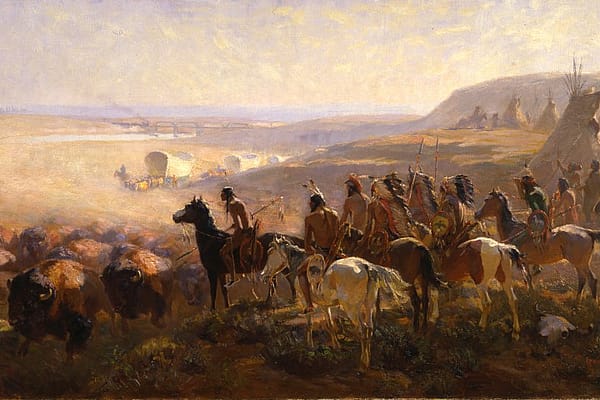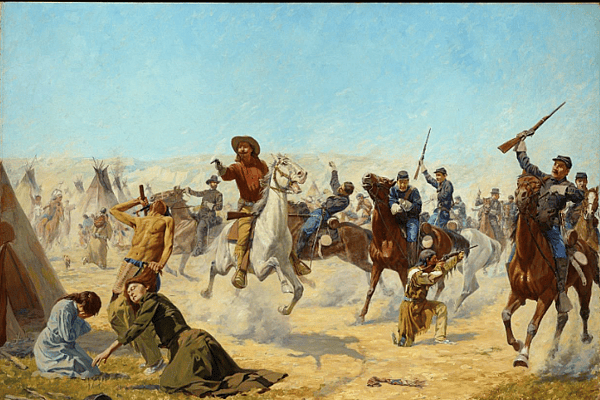
The Remington Studio
Much of the western image in the public mind today was created in an artist’s studio in New Rochelle, New York.
Frederice Remington’s portrayal of the frontier saga, enduring for almost a century now, helped America and the world reach conclusions as to what the West was and why it mattered.

The New Rochelle studio enveloped the artist in a creative atmosphere. There Remington was surrounded by his remarkable collection of Western props and paraphernalia, most of which he had enthusiastically purchased in the field. These artifacts were especially important to the artist when he was producing illustrations, as he could clothe his models in genuine pieces, lending authenticity to his work. Augustus Thomas has described the unusual variety of Remington’s studio collection: “All four walls of the studio were covered, above doors and windows and in their dead spaces, with military and Indian and Mexican trappings of all descriptions from spurs to war-bonnets; there were guns of every kind every carried by an American soldier; all kinds of swords and bridles, saddles, belts, canteens, cartridge-boxes, powder-horns, bayonets, and knives… In short, everything he might need for any Western picture.”
Remington produced the major body of his life’s work in the studio at New Rochelle, and when he died his obituary in the New York Times spoke mostly of its role in the artist’s eye. “He went up to New Rochelle and bought a fine old house on Webster Avenue. He built up a huge studio… In there he had those specimens of bronchos he depicted in bronze and color, and grouped about them his human models, all dressed in Indian and Western costumes, of which he kept a large stock on hand.” This studio, so important in Remington’s journey to fame, is now recreated as a proud addition to the Buffalo Bill Center of the West.
This article was originally published in a spring 1981 Buffalo Bill Center of the West newsletter.
Written By
Michaela Jones
Michaela, a Cody, Wyoming native, is the Centennial Media Intern at the Center of the West for the summer of 2017. She recently graduated from the University of Wyoming with a bachelor's degree in English and minors in professional writing and psychology. She's interested in writing for digital spaces, producing social media content, and learning about technology's impact on communication. In her spare time, she enjoys reading non-fiction, exploring the mountainous Wyoming regions, and spending time with family and friends.










